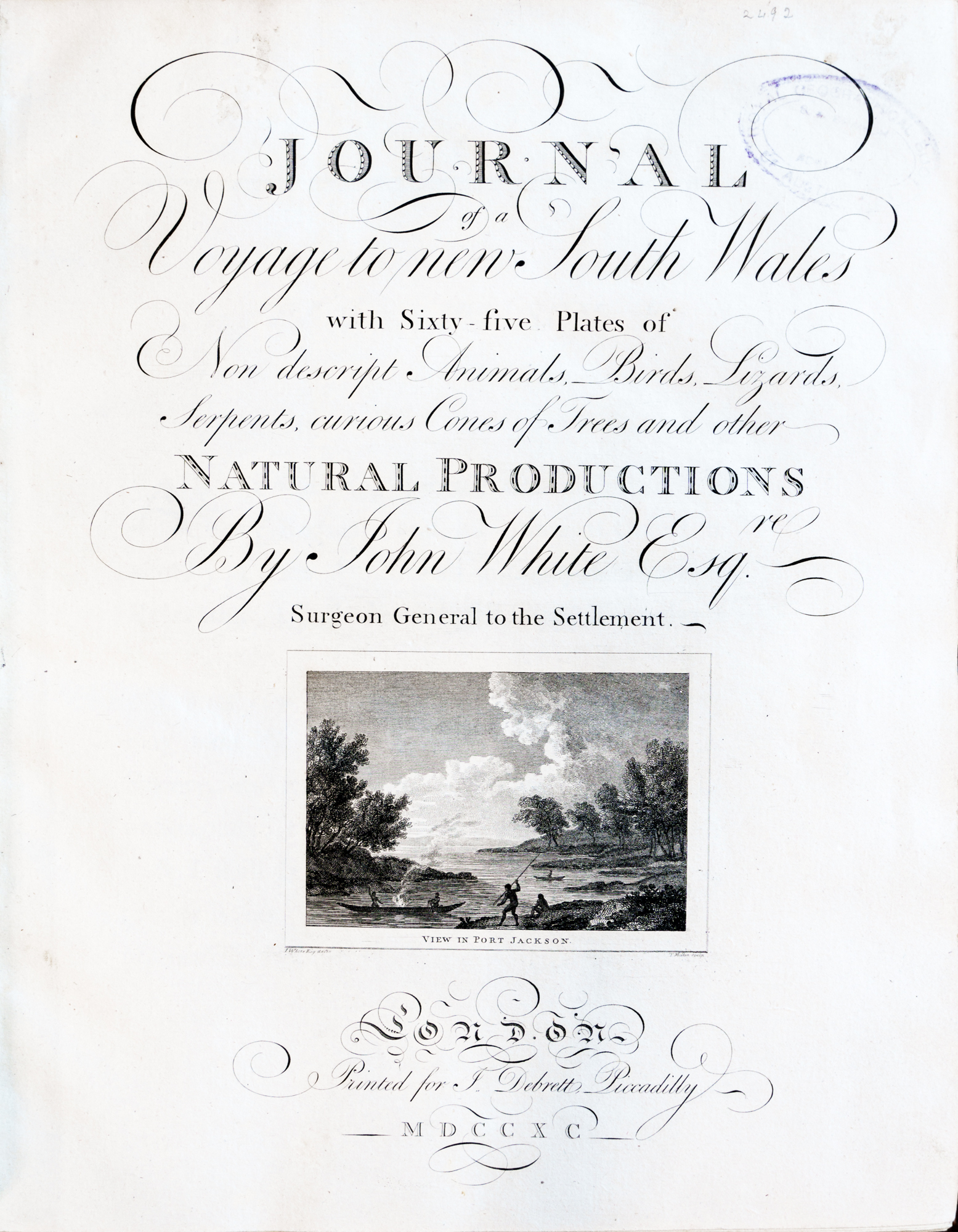
John White was an Irishman who entered the Royal Navy as a trainee surgeon in 1778, and in 1788 was appointed Surgeon-General of the new British penal colony in New South Wales. An energetic and sympathetic medic, he worked to improve the conditions for the convicts on the transport ship Charlotte, as well as founding the settlement’s first hospital.
Aside from his medical duties, White had an abiding love of natural history, and the Journal contains many of the first descriptions of Australian species known to western science. The book has 65 engraved plates, produced in England based on specimens and descriptions sent home by White. Many of the illustrations are thought to be based on the work of the British natural history illustrator, Sarah Stone. White was particularly interested in the medicinal properties of the native flora and fauna, and is reported to have been among the first to distil eucalyptus oil from plant samples in 1788.
The plates in this book were drawn in England from specimens sent back by White in November 1788, only 10 months after he arrived with the First Fleet in NSW. Included are pictures of dingoes, lizards, birds, insects, fishes, kangaroos and plants such as eucalypts and acacias as well as native implements. There is also a table of medical statistics "Deaths from December 1786 and July 1788" and tables of weather observations.
This RGSSA edition is one of the rare copies with hand coloured plates. However, the ‘Blue frogs’ (p 248) were not in fact blue – their colour had been changed from green to blue by preserving fluid on the way back to England.

